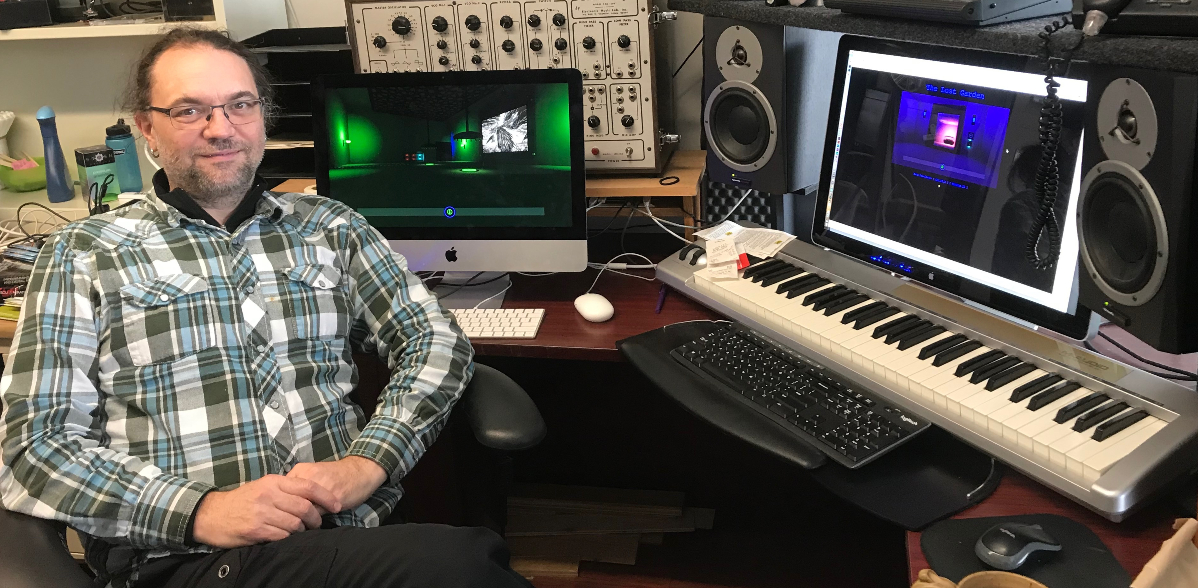If you've always been more intrigued by sound than motion in video games, a new game by University of Alberta soundscape composer Scott Smallwood might be the perfect fit.
The Lost Garden is a first-person puzzler where players advance by solving sonic puzzles, all in some way relating to climate change, said Smallwood, a music professor and self-described phonophiliac who calls the game "a place where I could think about composition in a different way."
Taking the better part of two years to develop, The Lost Garden is similar to the hit puzzle adventure game Myst of the 1990s, which was also designed for adults, said Smallwood.
"The idea is, you've awoken on a future Earth and you're underground. You have to figure out how to get out of this place and find the lost garden. In doing that, you see if you can discover what's happened, and the sounds offer clues."
For years Smallwood has been recording a range of natural and urban sounds that he arranges into sonic compositions he has spread throughout the game. Some have been performed live in concert halls, such as a recent piece based on the sounds of nature captured in Wood Buffalo National Park.
He sees his video game as one more way to give his compositions a kind of conceptual coherence-a new take on the quickly disappearing art form of the record album.
"In addition to all the other things this game is, it's also a way to listen to an album," he said.
"I wanted to make the game so I can actually have more feedback between what I'm trying to do musically and what the theme or story of the game could be."
Smallwood did all the coding himself on a gaming platform called Unity, with graphics and 3-D models from U of A alumna Jessa Gillespie, and with sound and puzzle designs from graduate student Nicolás Arnáez.
Virtual gallery of sonic art
The journey to the lost garden takes the player through five levels, each resembling a large room in an art gallery. On the wall are clues to what's happened to Earth, and in the centre of the room are stations that invite interaction by triggering music samples, industrial sounds and natural soundscapes featuring birds, wind, insects, rushing water and even fire.
Players are given no instructions and must figure out how the game works on their own.
"Each of the rooms presents a new and different kind of sonic puzzle," said Smallwood.
On one level, for example, the player enters a room and it goes completely dark.
"Suddenly you're in a forest with a beautiful boreal soundscape, which I recorded in Wood Buffalo," said Smallwood. "Suddenly, you hear a petroleum pump jack. You have to find the pump jack in the dark by sonically locating it.
"Eventually you hit it and the door opens, so the idea is you've kind of eliminated oil's intrusion in the natural world-that's the metaphor."
Smallwood said he's planning to exhibit The Lost Garden in the U of A's FAB Gallery in December as part of a group show with the Feminist Energy Futures group. The feedback will help him tweak the final version, which he hopes to post on the video distribution service Steam in April or May.
"It's been tested by a few people so far, but not enough to truly gauge whether it might be too hard for the average person to finish," he said.
In the meantime, the beta version of the game is available for free download in Mac and Windows versions.
